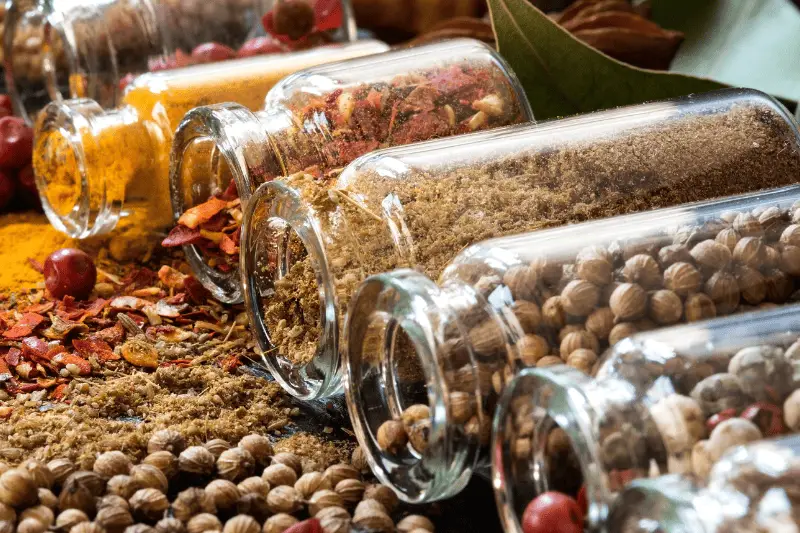Pickling is a time-honored method of preserving and enhancing the flavor of various foods. Whether you’re a seasoned pickler or a novice looking to try your hand at homemade pickles, choosing the right pickling spices is crucial.
The right blend of spices can elevate your dill pickles to new heights, providing a burst of flavors and aromas that will leave you craving for more. In this article, we will explore the best pickling spices for dill pickles, their benefits, and how to use them effectively.

Introduction to Pickling Spices
Pickling spices are a carefully selected blend of herbs, spices, and seeds that are used to infuse pickles with distinct flavors. These spices not only add depth and complexity to the pickles but also contribute to their preservation.
While there are numerous pickling spice blends available in the market, creating your own custom blend allows you to tailor the flavors to your preferences and experiment with different combinations.
Importance of Pickling Spices for Dill Pickles
Dill pickles are known for their tangy and slightly sour flavor, which is achieved through the use of pickling spices. These spices not only enhance the taste but also contribute to the overall appeal of dill pickles.
They infuse the pickles with aromatic flavors, giving them a unique character that sets them apart from regular cucumbers. By carefully selecting and using the right pickling spices, you can create dill pickles that are packed with flavors and utterly delicious.
Factors to Consider When Choosing Pickling Spices
When it comes to selecting pickling spices for dill pickles, there are a few factors to keep in mind to ensure the best results.
Freshness and Quality: It is important to use fresh and high-quality spices to achieve the best flavor. Stale or low-quality spices can result in dull and uninspiring pickles.
Flavor Profile: Consider the flavor profile you want to achieve. Do you prefer a more traditional dill flavor, or do you want to experiment with a tangy and spicy blend? Understanding the flavor profiles of different spices will help you make an informed decision.
Personal Preferences: Everyone’s taste preferences differ, so it’s essential to consider your own likes and dislikes. Experiment with different combinations to find the perfect balance that suits your palate.
Top 5 Pickling Spices for Dill Pickles
Here are the top five pickling spices that are widely used in making dill pickles:
1. Dill Seeds
Dill seeds are an essential component of dill pickles and provide that distinctive dill flavor. They impart a fresh and slightly tangy taste to the pickles. These small seeds also add a pleasant crunch and are often found floating in the brine.
2. Mustard Seeds
Mustard seeds are commonly used in pickling due to their tangy and slightly spicy flavor. They add a zesty kick to the dill pickles, enhancing their overall taste. You can choose between yellow, brown, or black mustard seeds, depending on the intensity of flavor you desire.
3. Peppercorns
Peppercorns are another popular pickling spice that brings a mild spiciness to dill pickles. They provide a subtle heat that complements the other flavors in the pickles. You can use black, white, or mixed peppercorns to achieve the desired level of spiciness.
4. Coriander Seeds
Coriander seeds contribute a unique citrusy and earthy flavor to dill pickles. They add depth and complexity to the overall taste profile. Coriander seeds are known for their aromatic properties and can transform a regular dill pickle into a culinary delight.
5. Bay Leaves
Bay leaves offer a subtle sweetness to dill pickles while adding a hint of bitterness. They infuse the pickles with a mild herbal flavor that complements the other spices. Bay leaves are typically used in whole form and are removed before serving.
Benefits of Using Each Pickling Spice
Each pickling spice used in dill pickles brings its own set of benefits and contributes to the overall flavor profile. Let’s explore the benefits of using each spice:
Dill seeds add the traditional dill flavor that is synonymous with dill pickles. They provide a fresh, slightly tangy taste and a delightful crunch.
Mustard seeds lend a tangy and spicy kick to the pickles, elevating their flavor and making them more vibrant.
Peppercorns introduce a subtle spiciness that adds depth and complexity to the pickles, creating a well-rounded taste experience.
Coriander seeds enhance the aroma and contribute a citrusy and earthy flavor that blends harmoniously with the other spices.
Bay leaves offer a subtle sweetness and a hint of bitterness, providing a balanced and nuanced taste to the pickles.
Recommended Ratios and Combinations of Pickling Spices
Achieving the perfect balance of flavors in your dill pickles is crucial. While there are no hard and fast rules, here are some recommended ratios and combinations of pickling spices that you can try:
- For a classic dill pickle flavor, combine dill seeds, mustard seeds, and black peppercorns in equal proportions.
- To add a spicy twist, increase the amount of mustard seeds and include a small number of red chili flakes.
- For a citrusy undertone, add coriander seeds and a few strips of lemon zest to the pickling spice blend.
- Experiment with different combinations and adjust the ratios based on your personal preferences.
Tips for Using Pickling Spices Effectively
To make the most out of your pickling spices, here are some helpful tips:
Toasting the Spices: Toasting the spices before using them can help enhance their flavors. Simply heat a dry skillet over medium heat and toast the spices for a few minutes until fragrant. Be careful not to burn them.
Proper Packaging and Storage: Store your pickling spices in airtight containers in a cool, dark place to maintain their freshness and flavor. This will ensure that your spices remain potent for future pickling endeavors.
Common Mistakes to Avoid When Using Pickling Spices
While pickling spices can greatly enhance the flavor of your dill pickles, there are some common mistakes to avoid:
- Using stale or low-quality spices can result in lackluster pickles with muted flavors.
- Overpowering the pickles with too many spices can lead to an unbalanced taste.
- Failing to remove bay leaves or other whole spices before serving the pickles can result in an unpleasant eating experience.
Remember to use pickling spices in moderation and experiment to find the perfect balance that suits your taste.
Frequently Asked Questions (FAQs)
1. Can I customize my own pickling spice blend?
Absolutely! Customizing your own pickling spice blend allows you to tailor the flavors to your liking. Experiment with different spices and ratios to create a unique blend that suits your taste preferences.
2. How long should I let the spices infuse into the pickles?
The amount of time needed for the spices to infuse into the pickles can vary. It is recommended to let the pickles sit in the brine for at least 24 hours to allow the flavors to develop. However, some pickles may benefit from longer soaking periods for a more pronounced taste.
3. Can I reuse the pickling spices for multiple batches?
Reusing pickling spices for multiple batches is possible, but the flavors may become more subdued with each use. It’s best to replace the spices after a few batches to ensure optimal flavor.
4. Are pickling spices only used for dill pickles?
No, pickling spices can be used to pickle a variety of vegetables and fruits. They add depth and complexity to the pickles, regardless of the main ingredient.
5. Can I substitute fresh herbs for pickling spices?
While fresh herbs can add their own unique flavors, they may not provide the same depth and complexity as pickling spices. However, feel free to experiment with fresh herbs alongside pickling spices to create your own signature blend.
Final Thoughts
Choosing the best pickling spices is essential for creating flavorful dill pickles. The right combination of dill seeds, mustard seeds, peppercorns, coriander seeds, and bay leaves can elevate your pickles to new heights.
Experiment with different ratios and combinations to find the perfect balance of flavors that suits your taste preferences.
Remember to use fresh and high-quality spices, toast them for enhanced flavors, and store them properly. With the right pickling spices and techniques, you can enjoy delicious, homemade dill pickles bursting with aromatic flavors.
FAQs
- Can I customize my own pickling spice blend?
- Absolutely! Customizing your own pickling spice blend allows you to tailor the flavors to your liking. Experiment with different spices and ratios to create a unique blend that suits your taste.
- How long should I let the spices infuse into the pickles?
- The amount of time needed for the spices to infuse into the pickles can vary. It is recommended to let the pickles sit in the brine for at least 24 hours to allow the flavors to develop. However, some pickles may benefit from longer soaking periods for a more pronounced taste.
- Can I reuse the pickling spices for multiple batches?
- Reusing pickling spices for multiple batches is possible, but the flavors may become more subdued with each use. It’s best to replace the spices after a few batches to ensure optimal flavor.
- Are pickling spices only used for dill pickles?
- No, pickling spices can be used to pickle a variety of vegetables and fruits. They add depth and complexity to the pickles, regardless of the main ingredient.
- Can I substitute fresh herbs for pickling spices?
- While fresh herbs can add their own unique flavors, they may not provide the same depth and complexity as pickling spices. However, feel free to experiment with fresh herbs alongside pickling spices to create your own signature blend.
